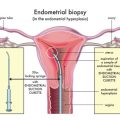Introduction to Cardiac Rehabilitation
Cardiac rehabilitation, often called “cardiac rehab,” is a specialized program designed to help people recover and thrive after heart-related health issues. In the United States, cardiac rehab is widely recognized as a key part of long-term heart health for those who have experienced a heart attack, undergone heart surgery, or been diagnosed with certain cardiovascular conditions. This structured approach blends exercise, education, and counseling to support patients on their journey to better health.
What Is Cardiac Rehabilitation?
Cardiac rehab isn’t just about working out—it’s a comprehensive plan tailored to each individual’s needs. The purpose of cardiac rehab is to:
- Help patients regain strength and confidence after a heart event
- Reduce the risk of future heart problems
- Improve overall quality of life
The process usually takes place in outpatient clinics or hospitals across the US, where participants work closely with a team that may include doctors, nurses, physical therapists, dietitians, and counselors.
Key Components of Cardiac Rehabilitation
| Component | Description | Example Activities |
|---|---|---|
| Supervised Exercise Training | Structured workouts designed for safety and effectiveness under medical supervision. | Treadmill walking, cycling, light resistance training |
| Education on Heart-Healthy Living | Classes and resources on nutrition, lifestyle changes, and managing risk factors. | Learning about low-sodium diets, understanding cholesterol levels |
| Counseling and Emotional Support | Support groups or one-on-one sessions to help manage stress and mental well-being. | Stress management workshops, coping strategies for anxiety or depression |
| Medical Monitoring | Regular check-ins and assessments by healthcare professionals to track progress. | Blood pressure checks, medication reviews |
Why Cardiac Rehab Matters in the US Context
The American Heart Association and other leading organizations strongly recommend cardiac rehab because research shows it can lower the chance of another heart event and increase survival rates. In the United States, insurance plans like Medicare typically cover cardiac rehabilitation for qualifying individuals. This makes it more accessible for many Americans who need support after a heart problem. Cardiac rehab programs also pay attention to cultural preferences and diverse backgrounds found across the country, aiming to provide care that fits each patient’s unique needs.
2. US Guidelines and Standards for Cardiac Rehab
Understanding the Role of AHA and ACC
In the United States, cardiac rehabilitation (CR) programs are guided by standards set by leading organizations like the American Heart Association (AHA) and the American College of Cardiology (ACC). These organizations provide evidence-based recommendations to ensure that patients receive high-quality care tailored to their needs after a heart event such as a heart attack, heart surgery, or diagnosis of heart failure.
Key Components of Comprehensive Cardiac Rehab Programs
The AHA and ACC emphasize that a good cardiac rehab program should include several essential components. Here’s a simple overview:
| Component | Description |
|---|---|
| Medical Evaluation | Assessing your health and creating a personalized plan |
| Supervised Exercise Training | Guided physical activity to improve heart function safely |
| Education on Heart-Healthy Living | Learning about nutrition, medications, and lifestyle changes |
| Counseling for Stress Management | Support for emotional well-being and coping skills |
| Risk Factor Modification | Identifying and addressing issues like high blood pressure or smoking |
Eligibility Criteria for Cardiac Rehab in the US
The Centers for Medicare & Medicaid Services (CMS), along with AHA and ACC guidelines, determine who qualifies for cardiac rehab. Common conditions eligible for CR include:
- Heart attack (myocardial infarction)
- Coronary artery bypass grafting (CABG)
- Stable angina (chest pain)
- Heart valve repair or replacement surgery
- Certain types of heart failure (with reduced ejection fraction)
- Heart transplantation or heart-lung transplantation
Eligibility Table: Who Can Join Cardiac Rehab?
| Condition | Covers Under US Guidelines? |
|---|---|
| Recent Heart Attack (within 12 months) | Yes |
| CABG Surgery | Yes |
| Chronic Stable Angina | Yes |
| Percutaneous Coronary Intervention (PCI) | Yes |
| Heart Valve Repair/Replacement Surgery | Yes |
| Certain Types of Heart Failure (LVEF ≤ 35%) | Yes (if stable and under optimal therapy) |
| No history of cardiac event/procedure but multiple risk factors only | No, unless other criteria met |
National Benchmarks for Quality Cardiac Rehab Programs
The AHA, ACC, and national registries have set benchmarks to help measure program quality across the US. These benchmarks focus on:
- The percentage of eligible patients referred to cardiac rehab after hospitalization.
- The number of sessions attended by each patient (with 36 sessions considered full participation).
- The improvement in exercise capacity and risk factor control among participants.
- The rate of hospital readmissions within 30 days and one year.
- The use of evidence-based medications in combination with lifestyle changes.
A Quick Look at Key Benchmarks in Cardiac Rehab Programs:
| Benchmark Goal | Description/Target (%) |
|---|---|
| Referral Rate after Heart Event | >70% of eligible patients |
| Total Sessions Completed | Aim for 36 sessions per patient |
| Sustained Smoking Cessation | >85% quit rate among smokers at program end |
| Systolic Blood Pressure Control | <140 mmHg in >80% of patients |
| Lipid Management | <100 mg/dL LDL cholesterol in >70% of patients |
| Reduction in Hospital Readmission | <20% within first year post-program |
This framework ensures that cardiac rehab programs across the United States deliver consistent, high-quality care to support long-term heart health for all eligible patients.
![]()
3. Program Structure and What to Expect
Phases of Cardiac Rehabilitation Programs in the US
Cardiac rehabilitation in the United States follows a structured approach, designed to help people recover from heart-related conditions and improve their long-term heart health. Understanding what happens in each phase can help you feel more comfortable and prepared for your rehab journey.
Typical Phases of Cardiac Rehab
| Phase | Description | Setting |
|---|---|---|
| Phase I: Inpatient | Begins while you’re still in the hospital after a heart event or surgery. Focuses on early mobility, basic education, and preparing for discharge. | Hospital |
| Phase II: Outpatient | A structured program with supervised exercise, nutrition counseling, education about heart health, and emotional support. Usually lasts 6-12 weeks with sessions 2-3 times per week. | Rehab center or clinic |
| Phase III: Maintenance | Ongoing support for maintaining healthy lifestyle changes, continued exercise, and group classes. Less supervision but regular check-ins. | Community centers, gyms, or at home |
What to Expect During Cardiac Rehab
1. Assessments and Personalization
Your rehab team—usually made up of doctors, nurses, physical therapists, dietitians, and counselors—will start with a thorough assessment. This includes checking your medical history, current fitness level, medications, and any concerns or goals you have. Based on this information, they create a plan tailored just for you.
2. Exercise Plans
You’ll participate in safe, supervised exercises like walking on a treadmill, cycling on a stationary bike, or light resistance training. The intensity is gradually increased based on your progress. Your team monitors your heart rate and blood pressure to keep everything safe and effective.
3. Nutritional Guidance
A registered dietitian helps you make heart-healthy food choices that fit your lifestyle and cultural preferences. This may include tips for grocery shopping, meal planning, reading nutrition labels, and dining out in American restaurants.
4. Patient Education
You’ll learn about managing risk factors such as high blood pressure, cholesterol, diabetes, and stress. Education sessions often cover medication management and how to recognize warning signs of heart problems.
5. Psychosocial Support
Coping with a heart condition can be emotionally challenging. Many programs offer support groups or individual counseling to help you deal with anxiety, depression, or other concerns related to recovery.
4. Long-Term Health Benefits of Cardiac Rehabilitation
Sustained Heart Health
Cardiac rehabilitation (CR) is much more than just a short-term program; it is a foundation for lasting heart health. Research in the United States shows that people who complete a full CR program are more likely to stick with healthy habits, such as regular exercise and eating well-balanced meals. These changes help keep blood pressure, cholesterol, and weight under control, reducing the risk of future heart problems.
Reduced Hospital Readmissions
One of the main goals of cardiac rehab in the US is to prevent patients from going back to the hospital. Studies have shown that patients who take part in CR are less likely to be readmitted within six months or even a year after their initial heart event. This is important because each hospital stay can be stressful and costly for both patients and their families.
Hospital Readmission Rates (Sample Data)
| Group | 6-Month Readmission Rate | 12-Month Readmission Rate |
|---|---|---|
| With Cardiac Rehab | 10% | 18% |
| Without Cardiac Rehab | 23% | 34% |
Mortality Reduction
Participating in a cardiac rehab program can actually help people live longer. Large studies across the US confirm that patients who complete CR have a lower risk of dying from heart-related causes compared to those who do not join these programs. These benefits remain even several years after the program ends.
Mortality Risk Comparison (Based on Research)
| Group | 5-Year Mortality Risk |
|---|---|
| With Cardiac Rehab | 12% |
| Without Cardiac Rehab | 20% |
Improved Quality of Life
A big focus in US cardiac rehab programs is helping patients get back to living life fully. CR provides education, emotional support, and supervised exercise—all designed to boost confidence and reduce anxiety about physical activity. Patients often report having more energy, being able to do daily activities without getting tired, and feeling more hopeful about their future.
5. Access, Insurance Coverage, and Community Resources
Getting Access to Cardiac Rehabilitation in the U.S.
Cardiac rehabilitation (cardiac rehab) is a key part of recovery for people with heart disease or after a cardiac event like a heart attack or heart surgery. In the United States, getting into a cardiac rehab program can be straightforward for some, but there are often challenges along the way. Knowing your options and resources is important to make sure you get the care you need.
Insurance Coverage: What’s Available?
Most Americans rely on health insurance to cover medical costs. Here’s how some common types of insurance handle cardiac rehab:
| Insurance Type | Coverage for Cardiac Rehab | What You Need to Know |
|---|---|---|
| Medicare | Yes (if medically necessary) | Covers up to 36 sessions; additional sessions may be approved; doctor referral required |
| Medicaid | Varies by state | Some states cover fully, others partially; check local guidelines; may require pre-approval |
| Private Insurance | Often covered | Coverage and copays depend on the plan; prior authorization may be needed |
| Veterans Affairs (VA) | Yes, for eligible veterans | Care available through VA Medical Centers; ask your provider for referral details |
Common Barriers to Accessing Cardiac Rehab
- Cost: Even with insurance, copays or deductibles can add up.
- Lack of transportation: Getting to regular sessions can be tough, especially in rural areas.
- Aware of programs: Not everyone knows cardiac rehab exists or how it helps.
- Cultural and language barriers: Some patients may feel uncomfortable if programs are not culturally sensitive or offered in their preferred language.
- Work and family commitments: Finding time for sessions during work hours can be a challenge for many Americans.
Community Resources and Ongoing Support
If you’re looking for extra help, many American communities offer resources beyond hospital-based programs. Here are some options:
- Local hospitals: Many have outpatient cardiac rehab programs open to community members.
- American Heart Association (AHA): Offers educational materials, support groups, and online tools nationwide.
- Parks & Recreation Departments: Some cities offer low-cost exercise classes for heart health.
- Faith-based groups and senior centers: May provide group exercise or walking clubs tailored to older adults.
- Telehealth and home-based programs: More providers now offer virtual rehab options so you can participate from home, which is especially helpful if travel is difficult.
Your Next Steps: How to Start Cardiac Rehab in the U.S.
- Talk to your doctor: Ask about a referral to a local program that fits your needs and insurance plan.
- Contact your insurance provider: Verify what’s covered and what paperwork is needed before starting.
- Explore community options: Check with local hospitals, community centers, or online directories for programs nearby or virtually.
- If cost is an issue: Ask about financial assistance—many programs have sliding scales or payment plans.
No matter where you live in the U.S., there are resources to help you access cardiac rehabilitation and continue your journey toward better heart health. Don’t hesitate to reach out—your long-term well-being is worth it!


